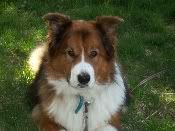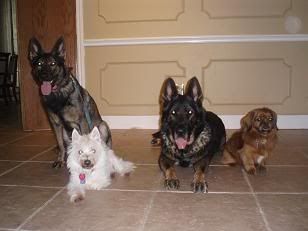Francis,
From reading your posts,
I'm confused<g>.
I think the first thing you need to do is be clear about what your training goal is for any specific session. What, exactly, are you working on, where you want to go with it with your dog.
When you charge a marker, like a clicker, once the dog understands that "click" means "treat coming," the marker is charged. That's it. The clicker is charged, you don't have to continue to charge it. Done.
After that, it's up to you how you want to use the marker. If you want to do free shaping, that's one approach. That's when you wait for the dog to do something, move incrementally in a direction you desire, click/reward, gradually raising the bar/waiting for more of the same behavior, or a progression of it, before marking/rewarding.
Lure/reward is just a different way to train that also uses markers. You are showing your dog what you want by luring, clicking when you get want you want, then gradually fading the lure so that your dog responds to the verbal or physical cue for the behavior.
When you get out your treats and clicker, and just stand there looking at your dog, of course he's going to start offering behaviors. If you click/treat the first thing he does (sit and give you eye contact), you're just telling him that's what you want from him. He will continue offering that behavior as long as that's what you are rewarding.
When you train a lot using shaping, you tend to get dogs who will run thru a whole repetoire of behaviors that have gotten them rewards in the past. Some dogs don't have temperaments that enjoy this kind of training, where they don't have a clue what you want, but just keep trying things until they find something you do want. This can lead to a lot of frustration on the dog and trainer's parts<g>.
It is also an art to be good at shaping behaviors, because you have to recognize even the smallest move in the direction you desire (moving a foot even the smallest bit in the right direction, for example, because you want your dog to eventually move towards some object across the room), and then you have to continue rewarding only moves in that direction, and moves that are incrementally more than the earlier one. You can't shape by waiting for your dog to move from a stand or sit to a down...you have to break it up much, much smaller than that.
Personally, I don't have the patience or personality to use shaping as my main training tool. I play with it some, but it's just for fun. My dog doesn't care for it either. Her opinion is, "show me what you want, damn it! This is making me nuts!"
So, I have always had a lot of success with the lure/reward method. I start with a specific goal in mind of how I define what I want my dog to learn, break it down into very small pieces, and go from there. Once your dog learns a specific behavior, such as "sit," then you ask for the behavior, and use the marker when you get what you want (quicker or straighter or longer sit, etc.).
I do agree that it's a good thing to let your dog know that you're happy with what s/he is doing at any given moment, such as resting quietly on his rug...so you go up to your dog, say "good rug" or "good rest" or "good" whatever, maybe pet or give a treat, and thus are rewarding the dog for just behaving well around the house.
But, when it comes to training, I don't think it's a good idea to reward unsolicited behavior. If I ask my dog to sit, and she sits, fine, reward that. But, if the dog comes up to me and sits in solicitation of a reward, I may tell her good girl, or good sit, but I'm not going to reward unsolicited behavior with treats.
So, I think you may want to back up a bit and decide exactly what you want from your dog...what are you trying to train? Until you have that figured out, you're only going to confuse your dog and yourself, regardless of which method you use.
leih
 Previous Topic
Previous Topic Index
Index Next Topic
Next Topic











 Top
Top






.jpg)
